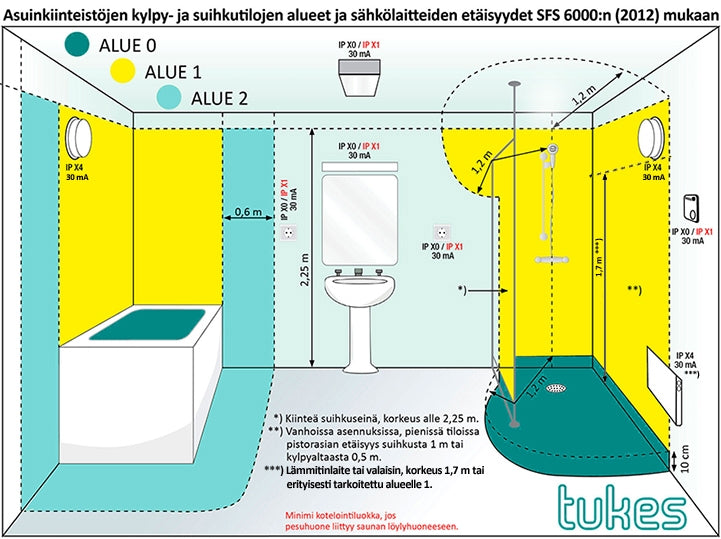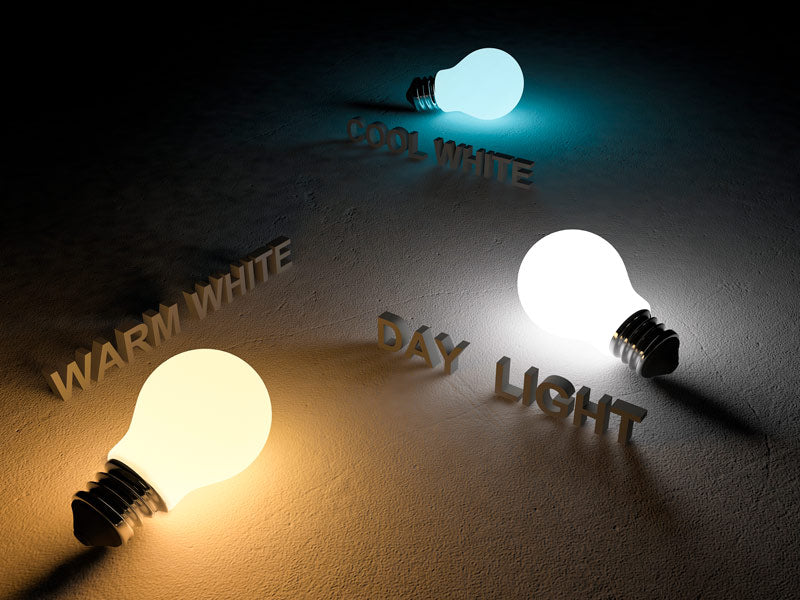
LED lighting
IP classes
For indoor and outdoor use

The IP (Ingress Protection) rating of a luminaire or other electrical equipment indicates the tightness of the equipment and its enclosures. The rating indicates the protection of the device against external threats such as dust and water. Different locations require different IP ratings. For example, a more sealed enclosure is required in damp areas than in dry areas, etc.
The marking consists of two digits. The first indicates the protection of the device against foreign objects and dust, the second number indicates the protection of the device against water and moisture. The level of protection has been tested using standardised test arrangements.
Examples
General IP classes for luminaires
IP20- A standard indoor luminaire is normally IP class 20, i.e. the device is protected against medium sized objects (such as a finger). There is no protection in other respects. Indoor restrooms, including toilets without showers.
IP21- For outdoor use in rain-protected areas such as canopies or under eaves, the IP21 enclosure class is sufficient, i.e. drip-proof.
IP23 - Rainproof luminaire. Used where protection from overhead water is required.
IP44- Protected against splash water. For example, a luminaire that is well protected both from conductors (objects thicker than 1.0 mm) and from water splashing from all directions. The fixture is not normally waterproof, but can be fitted with a waterproofing system to prevent water from entering the electrical components and also to ensure that water can escape from the luminaire. Often used in outdoor luminaires such as wall lights, bathrooms and saunas.
IP54/55 - Protected against dust and water spray. The IP54 or IP55 marked device can be used in dusty areas and outdoors because it is protected against water splashes. This marking is also common for example in damp locations.
IP66 - Dust-proof and protected against water spray. IP6x is the highest enclosure class for mechanical penetration (objects/dust). IPx6 means protection against strong water jets or wave splashes. Such equipment is often cleaned with a pressure hose or installed in boats where it is directly exposed to waves.
IP67- Dust and waterproof. Same mechanical penetration resistance as IP66, but the device must also be waterproof for 30 minutes at a depth of 1 metre. Widely suitable for outdoor use, except when the luminaire is immersed in a stream or swimming pool, for example.
IP68- Continuous immersion. Typical stamping used on electrical equipment submersible in water, such as submersible pumps. This could be a pool light, a water pump, a geothermal heat pump or an aquarium pump.
Exact meanings for the IP rating
First digit:
0: No protection.
1: Protection against large pieces, diameter 50mm or more.
2: Protection against medium sized pieces, diameter greater than 12.5mm (such as a finger).
3: Protection against small pieces, diameter more than 2,5mm.
4: Protection against very small pieces, diameter greater than 1mm.
5: Protected against dust. Does not require perfect tightness, but no harmful dust deposits must be generated.
6: Complete protection. Dust-tight.
Second number:
0: No protection against water.
1: Protection against water coming directly from above. Droplet-protected.
2: Protection against water coming from above +/-15 degrees.
3: Protection against water coming from above +/-60 degrees. Rainproof.
4: Protection against water splashes.
5: Resistant to water spray from any direction.
6: Resistant to high pressure spray.
7: Withstands momentary immersion in water.
8: Resistant to permanent immersion in water
Opi lisää!
Tietoa ledeistä
Tutustu muihinkin artikkeleihimme LED-valaistuksesta ja sen suunnittelusta sekä asennuksesta Tietoa ledeistä-sivuiltamme.

